The word “thank” correlates to the word “think” as the word “song” is to the word “sing.” When we are thankful and gracious, we are thoughtful: of others and not only ourselves. This is a great lesson for children from toddlers to teenagers. Aside from the customary birthday and holiday gifts, children have much to be thankful for, just as we are thankful for them.
Do you worry that the child in your care will act spoiled or ungrateful? As children enjoy time with those closest to them, at school with classmates comparing toys, or visiting grandparents who may spoil them rotten, we want them to always appreciate what they have while also feeling a sense of giving back.
 There are some really fun and creative ways to teach children about gratitude, and we’ve listed some suggestions here:
There are some really fun and creative ways to teach children about gratitude, and we’ve listed some suggestions here:
Giving Trees
Typically a favorite of classrooms around Thanksgiving, a Giving Tree can be a really fun project all year round. On each leaf, we can write the name of a person or thing which we are truly thankful for. Cut out leaf shapes from construction paper, or spend some time outside collecting real leaves as they fall in Autumn. Your local community organization may even have a Giving Tree to collect donations for families in need. These are all meaningful ways to teach children the importance of recognizing what we are thankful for, as well as being charitable.
Board Games
There are also retail board games that contain fun lessons about gratitude for the entire family. “My Gratitude Box” is a reading age collection of engaging activities and stories centered around thankfulness.
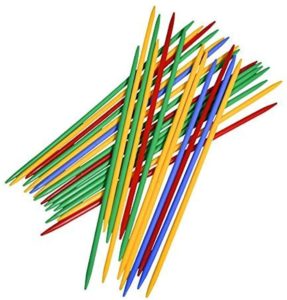
Have you ever played ‘Pick Up the Sticks’? You can assign one out each of the four colors (typically blue, green, red, and yellow) to a different category, such as a thing, a person, a place, or a food, and take turns picking up a stick while giving each other your color-coded example of gratitude.
Books
When we think about it, graciousness is actually a big part of mindfulness, a term you’re probably hearing much about these days. Learning gratitude is about being mindful of others and seeing things from a different perspective. Mindfulness and manners are themes in various children’s books, which not only encourage literacy and imagination but also inform kids about the value of appreciation. Here are some examples:
The Way Past Feelings Series
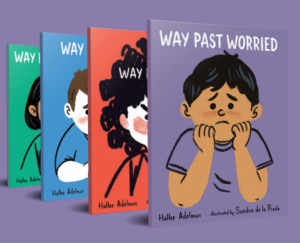
Author Hallee Adlemann has a collection of diverse & inclusive stories exploring the feelings of anger, jealousy, sadness, and worry. Each of her books presents a new emotional challenge the main character is trying to deal with and teaches kids that ultimately they must take the good with the bad. The examples are very relatable to what many kids experience every day and help them appreciate that no matter what they’re going through, they are not alone.
How to Change the World in 12 Easy Steps
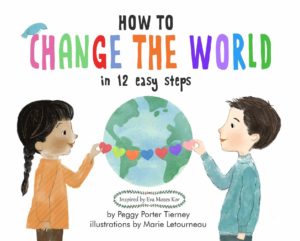 As caregivers, we want the very best for the children in our care, and know that someday they will grow up and change the world. Each page of this book by author Peggy Tierney gives us a little encouragement to be helpful, thoughtful, and kind. And as the title suggests, it shows children that it’s not at all difficult to do, especially when we open our hearts and remain considerate of others. Reading children’s books is such a powerful and imaginative way to inspire our little ones, and “How to Change the World” has great lessons in them to encourage good behaviors in practicing kindness.
As caregivers, we want the very best for the children in our care, and know that someday they will grow up and change the world. Each page of this book by author Peggy Tierney gives us a little encouragement to be helpful, thoughtful, and kind. And as the title suggests, it shows children that it’s not at all difficult to do, especially when we open our hearts and remain considerate of others. Reading children’s books is such a powerful and imaginative way to inspire our little ones, and “How to Change the World” has great lessons in them to encourage good behaviors in practicing kindness.
 Crafts
Crafts
Time to get creative! Let’s use a fun arts and craft project to explore themes about feeling grateful and showing thanks.
Gratitude Box
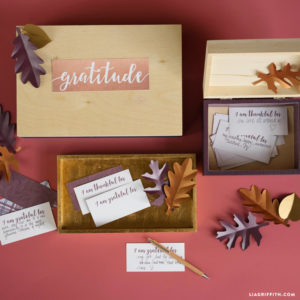 Not only is it important to teach children how to be generous, but kids can also learn how to make and send thank you cards after receiving a kind gesture. Similar to a suggestion box, a gratitude box can be a very intentional way for kids to connect a tangible action to thankfulness. Using any materials available, talk about why we say “Thank You” and “You’re Welcome”, and create colorful and crafty notes they can drop in their gratitude box every time they want to show appreciation.
Not only is it important to teach children how to be generous, but kids can also learn how to make and send thank you cards after receiving a kind gesture. Similar to a suggestion box, a gratitude box can be a very intentional way for kids to connect a tangible action to thankfulness. Using any materials available, talk about why we say “Thank You” and “You’re Welcome”, and create colorful and crafty notes they can drop in their gratitude box every time they want to show appreciation.
Generosity Chart
Progress charts are a great way to incentivize good behaviors and work even better among siblings. What if you were to give a sticker or a symbolic gift for every kind, gracious gesture your child makes?
Examples can be helping with chores, setting the table, being patient, and taking turns. This can be like an allowance chart, but for a different spin, you could match what your child makes and donate the money to your child’s favorite charity. It will make them feel like they have a part in making a big difference in our world.
Volunteering
Community outreach is such a great theme to present to children, and the earlier the better. Generosity is directly linked to gratitude, and encouraging kids to give back to their community can help them get a sense of what to be thankful for when seeing others who may not have as much as they do.
The Honeycomb Project
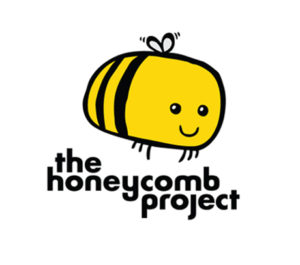 A collection of programs designed to tackle urban problems through teamwork, this charitable organization puts kids and families at the forefront. From beach cleanups to food drives, The Honeycomb Project provides opportunities for kids to learn just how much of an impact they can make, and that’s something parents can appreciate!
A collection of programs designed to tackle urban problems through teamwork, this charitable organization puts kids and families at the forefront. From beach cleanups to food drives, The Honeycomb Project provides opportunities for kids to learn just how much of an impact they can make, and that’s something parents can appreciate!
Make a Donation
Any time is a good time to de-clutter. Have the kids sort through their outgrown clothes, and decide which toys they can be willing to part with and share with kids in need. This is a great exercise in gratitude, helping them inventory all of the awesome things they receive while giving them the chance to be on the giving side as well. Be sure to check in with the parents before beginning this project to make sure you’re on the same page.
Become a St.Jude Hero
It can be difficult for a child to understand why another child might be very sick and not able to do the same things they can. Letting them know that they can help other kids by running and supporting a worthy cause can be fun and rewarding. Pair up with other families and create a whole team of heroes! Recognizing when others are in need of our help can help us be thankful for all we’ve been given.
 These are just a few examples of the many ways children can learn kindness and gratitude. In developed countries, it can be easy for kids to fall prey to materialism, consumerism, and greed. While it can feel good to have nice things, children (and adults for that matter) sometimes need a reminder that people count the most, and we should place a high value on our time together with people who truly care about us on the inside.
These are just a few examples of the many ways children can learn kindness and gratitude. In developed countries, it can be easy for kids to fall prey to materialism, consumerism, and greed. While it can feel good to have nice things, children (and adults for that matter) sometimes need a reminder that people count the most, and we should place a high value on our time together with people who truly care about us on the inside.

